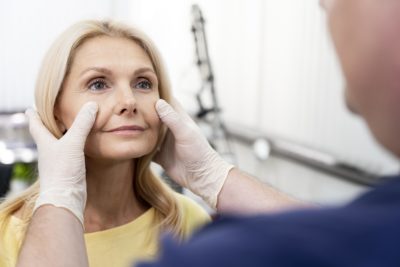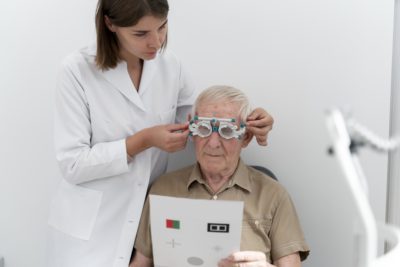You must have experienced inflammation in your eyes, but have you experienced it in your eyelids? If yes, then it’s high time to give your eyes proper medical care. An inflammation in your eyelids is termed Blepharitis. In this condition, you feel a burning sensation, lids colour changes to red or dark. Further, it becomes swollen and scaly.
Though, blepharitis is an eyelid inflammation, but it can cause eye infection. Moreover, unlike other medical conditions, blepharitis rarely leads to permanent vision loss.
Usually, blepharitis impacts both of your eyes. Itching of eyelids, red, and watery eyes are some common symptoms of this eye condition.
Blepharitis is of two types – anterior blepharitis and posterior blepharitis that we will discuss in this blog as you read it down.
What are Different Types of Blepharitis?
Blepharitis is divided in two forms, depending on the location the symptoms are reflected in. Here is the difference between anterior and posterior blepharitis:
-
Anterior Blepharitis
Anterior blepharitis occurs in the front exterior of the eyelid. It turns red or dark in colour and swollen. Skin bacteria or dandruff from the eyebrows or lashes leads to this condition. It involves both staphylococcal and seborrheic blepharitis. The former one is caused by staph bacteria. When it overgrows, your eyes get sore and puffy with flakes around the eyelid border. Allergies, mites, and poor eyelid hygiene are other common factors causing this and can turn into chronic anterior blepharitis. Be careful to observe anterior blepharitis symptoms.
-
Posterior Blepharitis
Posterior blepharitis is an eye condition caused on the exterior part of the inner edge of the eyelid. An irregular oil production (meibomian blepharitis) on this part favours the bacterial growth, clogging your eyelids. Itchiness, redness, or swelling in your eyelid are common posterior blepharitis symptoms which can lead to chronic posterior blepharitis if left untreated.
How is Blepharitis Diagnosed?
Diagnosis of both anterior and posterior blepharitis begins with comprehensive eye examination. Our healthcare professionals conduct analysis of your eye condition that includes symptoms, examination of eye lid margin, eye lashes, meibomian gland opening, tear film status, debris using slit lamp microscope. This examination gives an idea about the type of blepharitis.
Eye care specialists also perform some tests to understand the function of Meibomian glands and assess the severity and type of blepharitis – anterior and posterior.
How is Blepharitis Treated?
The right blepharitis treatment alleviates its symptoms and improves eyelid hygiene. If you are diagnosed with anterior blepharitis, eyelid hygiene is the foremost practice. It also prevents the occurrence of blepharitis.
In this condition, warm compressing is applied, which is an effective way to soften the crusts and scales. Thereafter, a cleansing process is followed with antibacterial ointment application if there is bacterial growth. When the situation worsens, you may get a prescription for oral antibiotics like doxycycline. To manage blepharitis, corticosteroid eye drops can be effective to help you relieve from inflammation and other sensations.
Blepharitis is a common eye condition and can affect people of all ages. You observe swollen eyelids, red and irritated eyes, itchiness, skin flakes accumulation around eyelids, dry eye, or excessive tearing as common symptoms. It might impact your vision and both of your eyes can get affected. Based on the type of blepharitis – anterior and posterior, eye care professionals proceed with the diagnosis and treatment. This disease requires continuous medication and proper care to relive the symptoms.
If you have any difficulty in your eyes, eye care specialists at Dr Agarwal Eyecare Hospital provide you the proper medications and solutions to mitigate this eye condition. Book your appointment now!









